Top 10 Must-See Attractions at Shaolin Temple
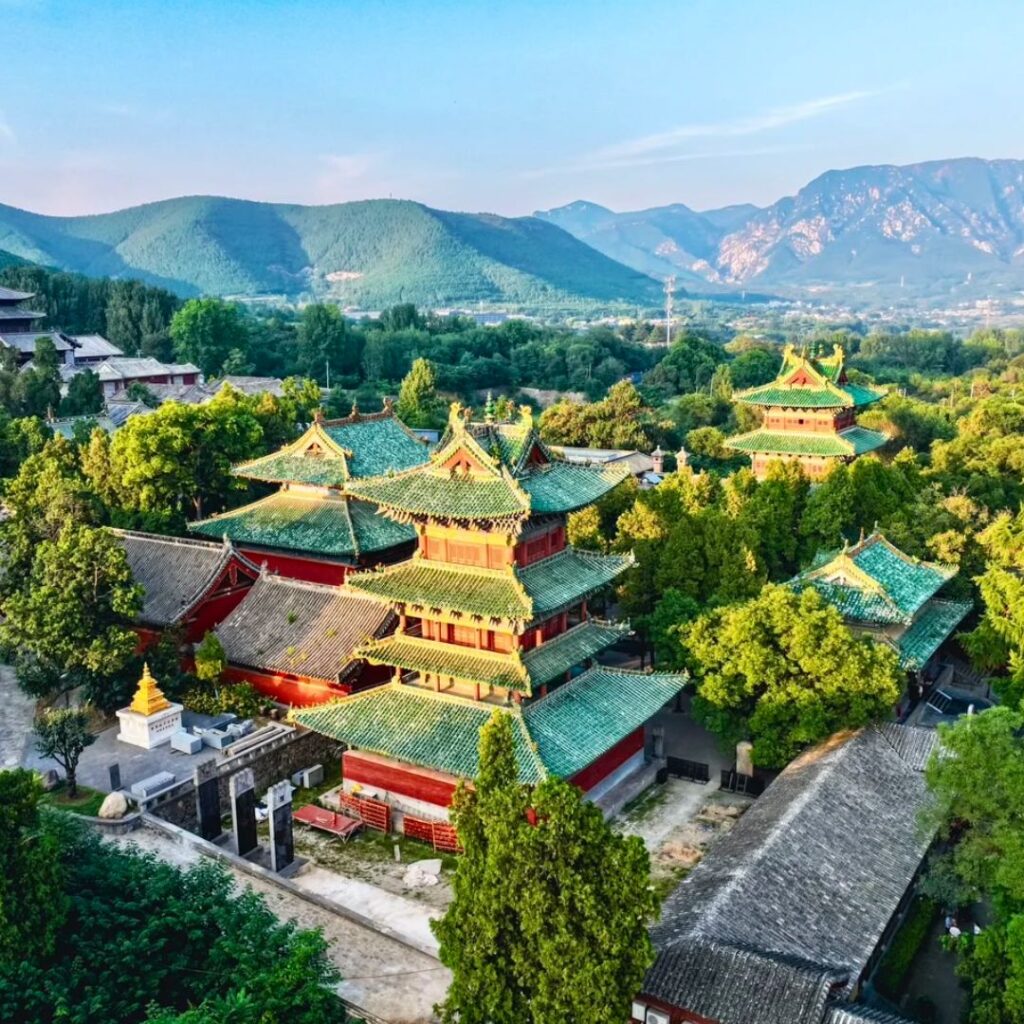
An Essential Guide to Visiting Shaolin Temple
In This Guide
- An Essential Guide to Visiting Shaolin Temple
- The Rich History and Legends of Shaolin Temple
- Main Highlights: What You Absolutely Can’t Miss
- Planning Your Visit: A Practical Guide
- Tickets: Prices, Booking, and Tips
- How to Get There: A Complete Transportation Guide
- Local Cuisine and Accommodation Nearby
- Frequently Asked Questions
- Final Thoughts on Your Trip
Visiting the Shaolin Temple is akin to stepping into a living tapestry of history, spirituality, and martial artistry. Nestled in the breathtaking Songshan region of Henan Province, this iconic temple is not just a site of religious significance; it is the birthplace of Shaolin Kung Fu and a beacon of Zen Buddhism. Since its founding in 495 AD, Shaolin Temple has drawn countless pilgrims and travelers alike, all eager to explore its profound legacy.
As you wander through its expansive grounds, spanning over 57,600 square meters, you’ll find yourself surrounded by lush forests and stunning mountain vistas, each corner whispering tales of ancient monks and legendary warriors. Here, the serene atmosphere invites reflection, while the echoes of martial training inspire awe. The temple serves as a vital cultural hub, housing institutions dedicated to preserving Shaolin’s rich traditions, including the Shaolin Medicine Bureau and the Shaolin Kung Fu Research Association.
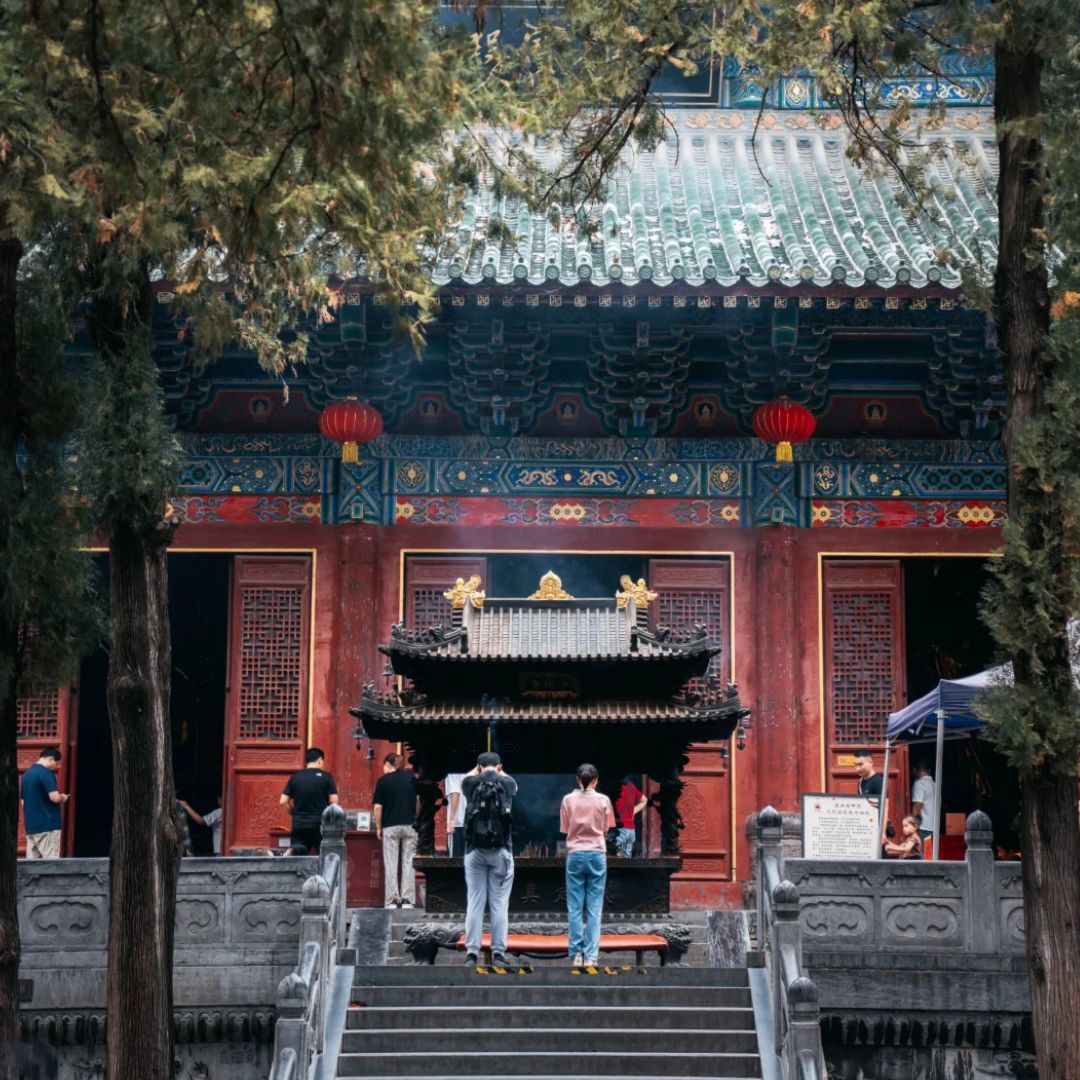
Shaolin Temple.
Whether you are a history buff, a spiritual seeker, or a martial arts enthusiast, Shaolin Temple offers a journey through time that connects you with the essence of Chinese culture. In this essential guide, we will navigate the must-see highlights, architectural wonders, and the profound teachings that have made Shaolin Temple a UNESCO World Heritage site and a premier destination for international travelers. Prepare to immerse yourself in a world where ancient wisdom and modern practices coexist in perfect harmony!
The Rich History and Legends of Shaolin Temple
Nestled in the picturesque Songshan region of Henan Province, Shaolin Temple stands as a testament to the rich tapestry of history and legend that has unfolded over nearly 1,500 years. Founded in 495 AD by Emperor Xiaowen, this revered site was dedicated to the Indian monk Batuo, who played a pivotal role in establishing Buddhism in China. As you wander through its expansive grounds, spanning approximately 57,600 square meters, you will find yourself surrounded by the echoes of ancient wisdom and the vibrant spirit of martial arts.
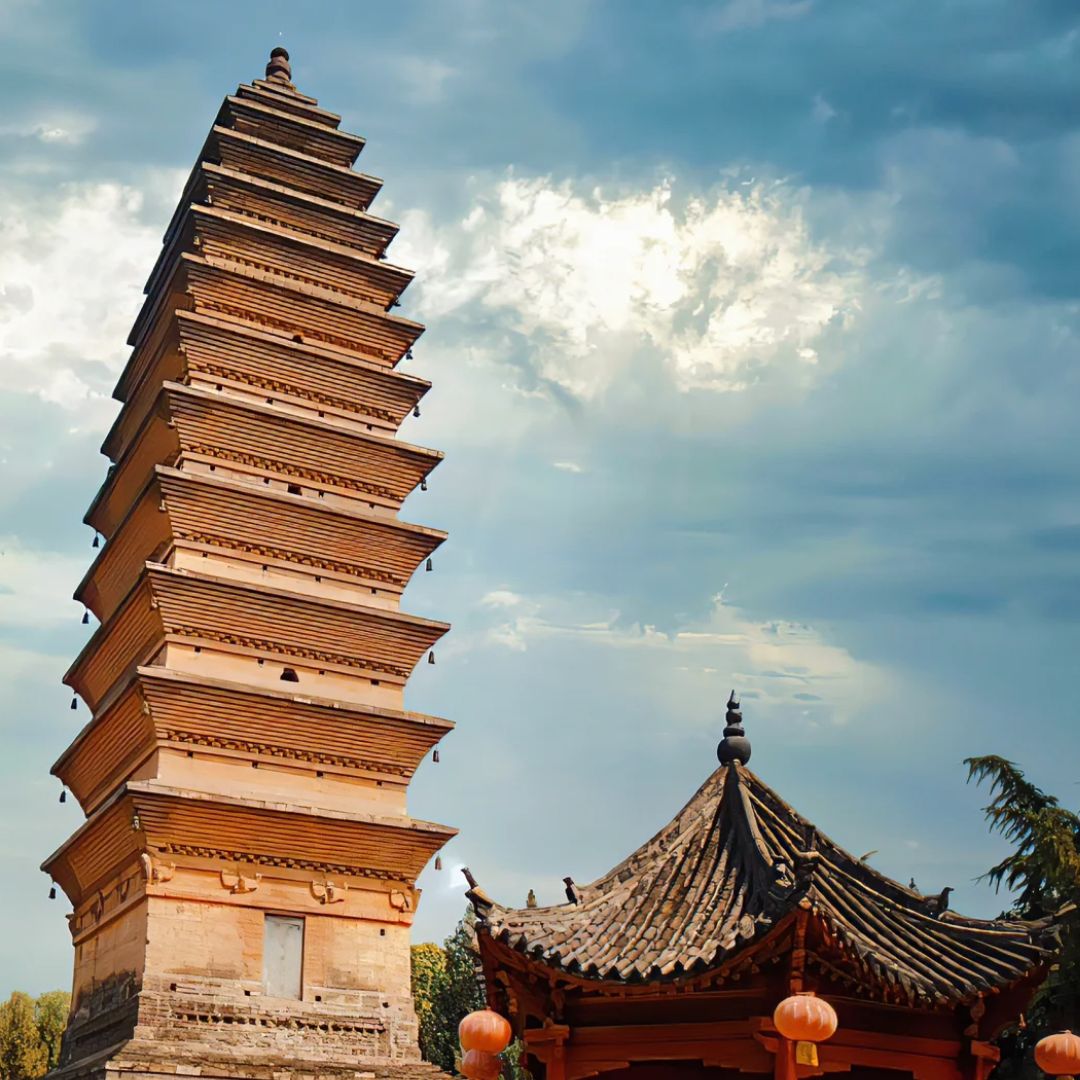
Shaolin Temple.
A Historical Landmark
Shaolin Temple is not only a spiritual haven but also a UNESCO World Heritage site, recognized for its cultural significance and historical importance. The temple’s architecture reflects traditional Chinese design principles, harmonizing with the stunning natural landscape of the southern slopes of Mount Taishi. This sacred site has withstood the test of time, enduring the trials of various dynasties and wars while continuing to inspire those who seek knowledge and enlightenment.
The Birthplace of Zen and Kung Fu
Often hailed as the “Ancestral Courtyard of Zen” and the “Holy Land of Kung Fu,” Shaolin Temple is the cradle of martial arts. It is said that “All Kung Fu under heaven originates from Shaolin,” a claim deeply rooted in the temple’s legacy. The integration of Zen Buddhism and martial discipline has given rise to a unique philosophy known as “Martial Arts Zen,” emphasizing the unity of mind and body in the pursuit of spiritual and physical excellence.
Legends and Fables
Throughout its storied history, Shaolin Temple has been the backdrop for countless legends that continue to capture the imagination. One of the most famous tales is that of the “Thirteen Monks Saving the Tang Emperor.” This legend narrates how a group of Shaolin monks played a crucial role in rescuing Emperor Li Shimin from an assassination plot, showcasing the temple’s martial prowess and loyalty to the state. The bravery and skills of these monks have been immortalized in art, literature, and film, further solidifying Shaolin’s status as a cultural icon.

Shaolin Temple.
The Pagoda Forest: A Silent Witness
Just a stone’s throw from the temple lies the Pagoda Forest, the largest collection of ancient pagodas in China, serving as the burial ground for generations of Shaolin monks and abbots. This serene grove, with its 256 pagodas, each bearing inscriptions that tell stories of the temple’s past, offers a glimpse into the lives of those who dedicated themselves to the pursuit of enlightenment. Among the notable structures is the Ling Pagoda, built in 1339, adorned with calligraphy by the Japanese monk Shaoyuan, honoring the revered Zen Master Juean.
The Legacy of Shaolin Kung Fu
Shaolin Kung Fu, with its over 700 techniques, has transcended borders and cultures, influencing martial arts worldwide. This intricate system, rooted in both Zen philosophy and martial discipline, has shaped the identity of Chinese martial arts. The teachings of Shaolin emphasize physical strength, agility, and precision, alongside a deep spiritual connection to Zen principles. Such a rich legacy continues to inspire practitioners and enthusiasts across the globe, drawing them to the temple to learn, practice, and immerse themselves in its profound traditions.
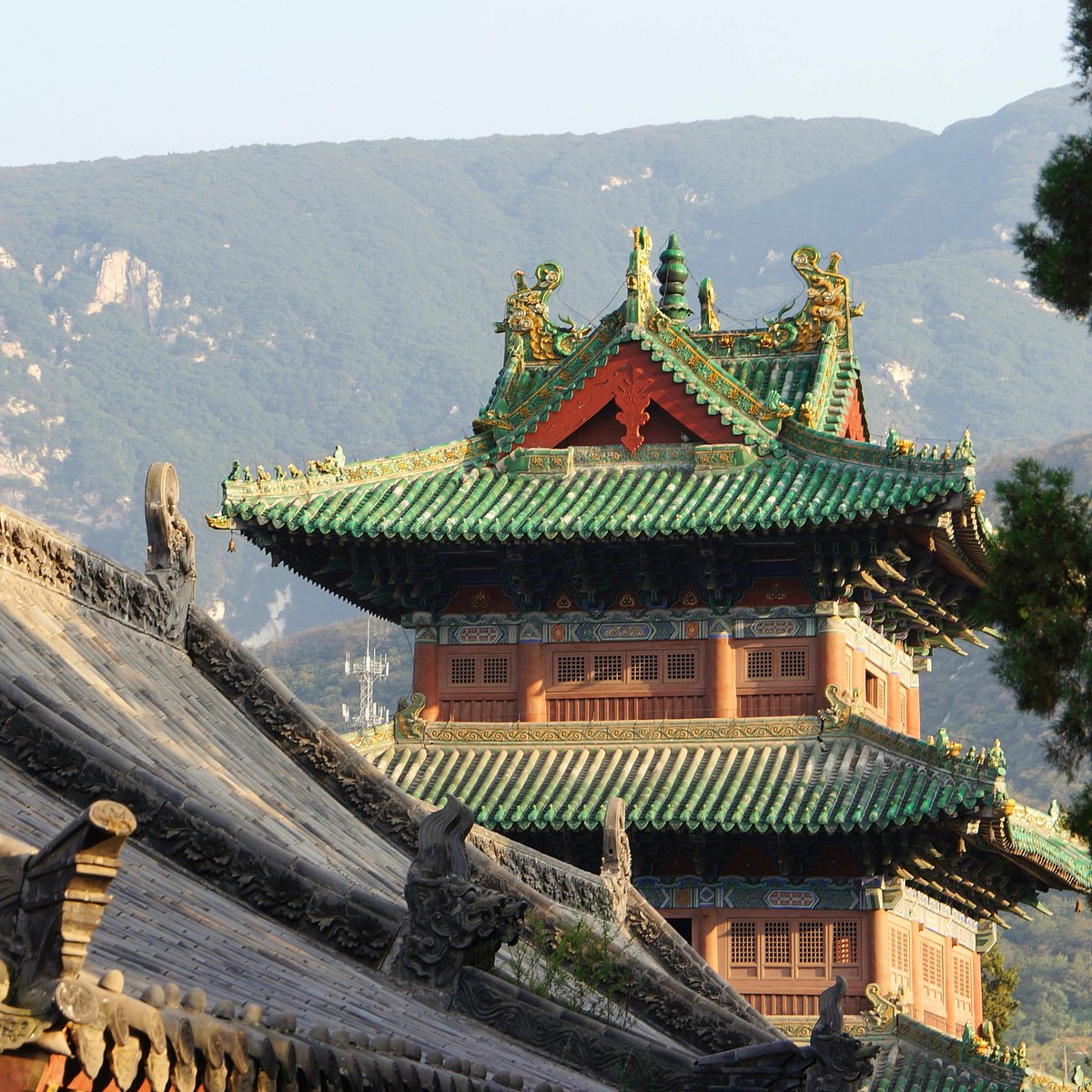
Shaolin Temple.
A Living Tradition
Under the guidance of its current abbot, Shi Yongxin, Shaolin Temple remains a vibrant hub of knowledge and spiritual growth. It houses various institutions, including the Shaolin Medicine Bureau and the Shaolin Kung Fu Research Association, which promote the temple’s rich traditions and teachings. Visitors are invited to engage with this living heritage, exploring the diverse programs that extend Shaolin’s influence far beyond the borders of China.
Conclusion
As you embark on your journey to Shaolin Temple, you will not only witness its stunning architecture and breathtaking surroundings but also become part of a living history that has shaped the spiritual and cultural landscape of China. From the legends of heroic monks to the profound wisdom of Zen, Shaolin Temple offers a rich tapestry of experiences that resonate with all who seek knowledge, peace, and inspiration. Embrace the magic of this sacred site and let it awaken the spirit of adventure within you.
Main Highlights: What You Absolutely Can’t Miss
Explore the Unmissable Highlights of Shaolin Temple
Nestled in the serene embrace of Mount Taishi in Henan Province, the Shaolin Temple stands not only as a spiritual sanctuary but as a living testament to China’s rich history and culture. When planning your visit, here are the main highlights that you absolutely cannot miss:

Shaolin Temple.
1. A Historic Landmark
Founded in 495 AD under the reign of Emperor Xiaowen, this temple honors the revered monk Batuo. Its ancient stones and breath-taking architecture narrate centuries of spiritual and martial tradition.
2. Stunning Surroundings
The temple is surrounded by the lush forests of Shaoshi Mountain, offering a tranquil escape. As you wander through its expansive 57,600 square meters, take a moment to absorb the natural beauty that envelops this historic site.
3. Zen and Kung Fu Legacy
Recognized as the “Ancestral Courtyard of Zen” and the “Holy Land of Kung Fu,” Shaolin Temple is the birthplace of martial arts and Zen Buddhism in China. The saying “All Kung Fu under heaven originates from Shaolin” reflects its monumental influence on martial practices worldwide.

Shaolin Temple.
4. UNESCO World Heritage Site
As a UNESCO World Heritage Site, the temple’s significance is celebrated not just in China but across the globe. Its rich cultural and historical importance offers insight into the profound impact of Zen and martial arts on both Chinese society and the world.
5. The Pagoda Forest
Just a short walk from the main temple, the Pagoda Forest is a breathtaking burial ground featuring 256 ancient pagodas. Each pagoda tells a story, honoring the legacy of Shaolin monks and abbots throughout history. The Ling Pagoda, built in 1339, is particularly noteworthy for its exquisite inscriptions.
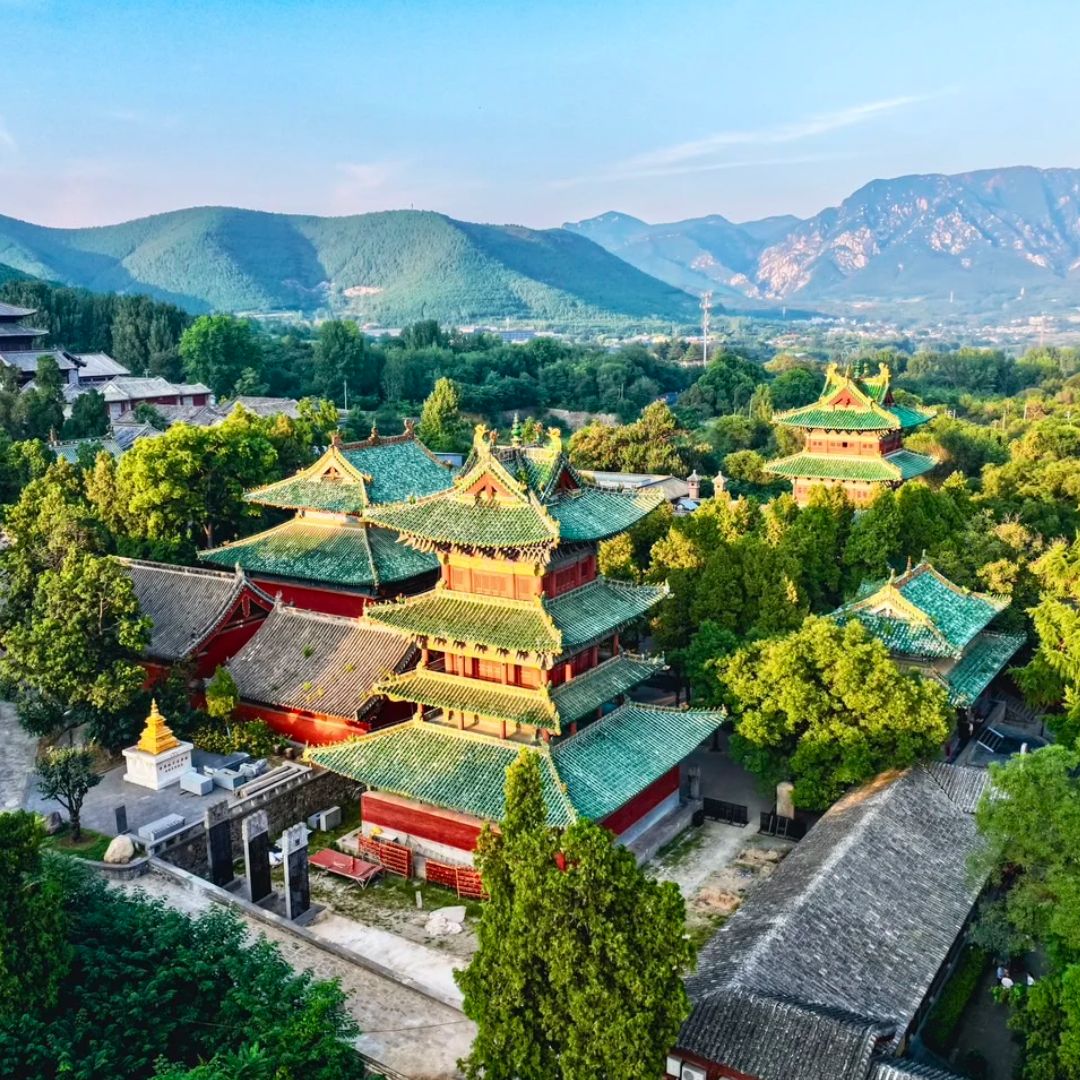
Shaolin Temple.
6. Dharma Cave
Located a mere 300 meters west of the temple, the Dharma Cave is home to over 240 pagodas dating from the Tang to Qing Dynasties. This serene site invites meditation and reflection amid its spiritual monuments.
7. Architectural Wonders
Marvel at the intricate architecture throughout the temple grounds:
– Mountain Gate: Built in 1735, this grand entryway is adorned with inscriptions by Emperor Kangxi himself.
– Mahavira Hall: Rebuilt in 1986, this hall is an oasis of devotion featuring stunning statues of Shakyamuni, Medicine Buddha, and Amitabha.
– Bell and Drum Towers: These magnificent structures keep the rhythm of monastic life alive with their melodious sounds echoing through the temple grounds.
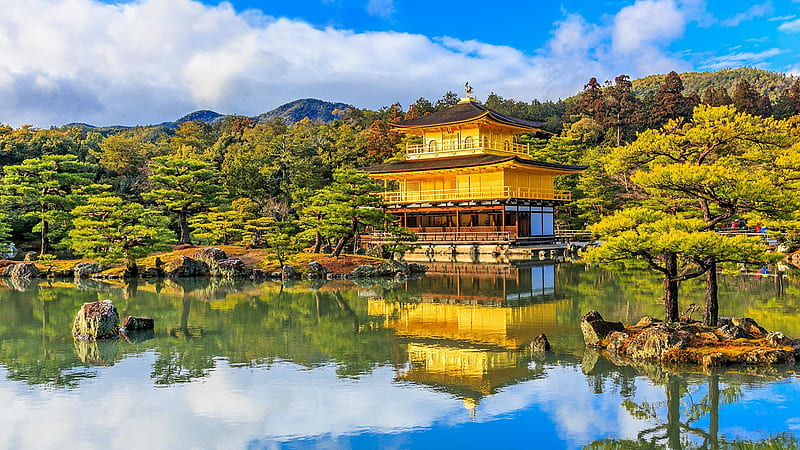
Shaolin Temple.
8. Cultural Institutions
Shaolin Temple is not merely a historical site; it also serves as a hub for knowledge and practice. Institutions such as the Shaolin Medicine Bureau and Shaolin Kung Fu Research Association further the temple’s mission to promote its rich traditions and teachings globally.
9. Martial Arts Demonstrations
Experience the power of Shaolin Kung Fu, the largest martial arts system in China, where physical and spiritual training converge. Attend live demonstrations by the Shaolin Martial Monks Corps to witness breathtaking displays of agility and mastery.
10. Sutra Library
Home to over eight million Buddhist texts, the Sutra Library showcases the temple’s commitment to spiritual education. Here, amidst tranquil surroundings, monks study, preserving the wisdom that has shaped Shaolin’s identity for centuries.
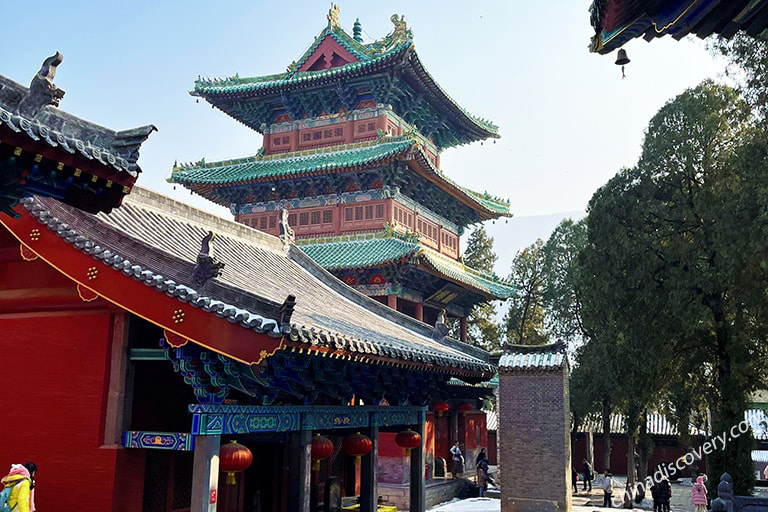
Shaolin Temple.
11. Cultural Celebrations
If you’re fortunate enough to visit on March 21, join the festivities for Shaolin Day, officially recognized in California. This day highlights the temple’s contributions to Zen and martial arts, offering a unique opportunity to engage with local traditions and learn more about the Shaolin legacy.
Conclusion
Shaolin Temple is a profound intersection of history, spirituality, and culture, making it an unmissable destination for any traveler interested in the depths of Chinese heritage. As you explore its sacred grounds, let the temple’s rich stories and breathtaking beauty inspire your journey through time.
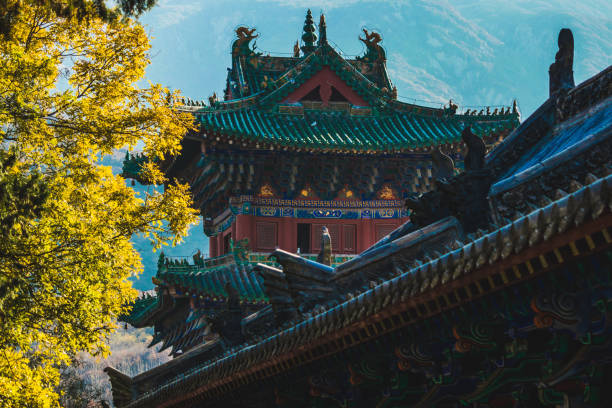
Shaolin Temple.
Planning Your Visit: A Practical Guide
Visiting the Shaolin Temple in the stunning Songshan region of Henan Province is more than just a trip; it’s an immersive journey into the heart of Chinese history, culture, and spirituality. This practical guide will help you plan your visit to this iconic landmark, ensuring you make the most of your experience.
Getting There
Location: The Shaolin Temple is located on the southern slopes of Mount Taishi, near the city of Dengfeng in Henan Province.
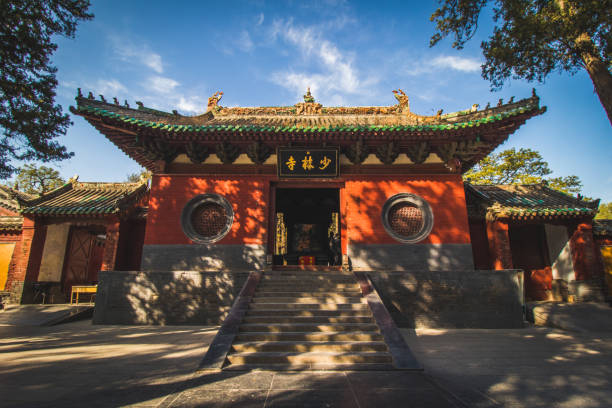
Shaolin Temple.
Transportation Options:
– By Air: The nearest airport is Zhengzhou Xinzheng International Airport (CGO), approximately 70 kilometers away. From there, you can take a taxi or a bus to Dengfeng.
– By Train: Dengfeng Railway Station is serviced by trains from major cities like Zhengzhou and Luoyang. Once in Dengfeng, local buses or taxis can take you to the temple.
– By Bus: Direct buses to Shaolin Temple are available from Zhengzhou and other nearby cities. The bus ride offers a scenic view of the countryside.
Best Time to Visit
Seasons: The ideal time to visit is during spring (April to June) and autumn (September to November) when the weather is mild and the natural surroundings are at their most vibrant.

Shaolin Temple.
Festivals: If you want to experience the cultural richness of the temple, consider visiting during significant events, such as the annual Shaolin Day on March 21, which celebrates the spirit of Zen and martial arts.
Entrance Fees and Opening Hours
- Entrance Fee: The general admission fee is around 100 CNY (approximately 15 USD), which may vary for special exhibitions or events.
- Opening Hours: The temple is open from 6:00 AM to 6:00 PM. Arriving early will allow you to enjoy the serene atmosphere before the crowds arrive.
Highlights to Explore
Architectural Wonders
- Mountain Gate: Your journey begins at this historic gateway, built in 1735. Admire its grand design and the stone lions guarding the entrance.
- Mahavira Hall: The main Buddhist hall invites visitors to reflect amidst stunning statues of Shakyamuni and other revered figures.
- Pagoda Forest: Just a short walk from the temple, this serene burial ground features 256 ancient pagodas, each a testament to the monks’ legacy.
Cultural Experiences
- Kung Fu Performances: Don’t miss the daily Kung Fu shows, where young monks showcase their martial arts skills, blending tradition with breathtaking athleticism.
- Meditation and Zen Practices: Consider participating in a meditation session to connect deeply with the temple’s spiritual essence.
Accommodation Options
On-site Lodgings
- Shaolin Temple Guesthouse: For a unique experience, stay overnight within the temple grounds. This offers an immersive retreat amidst the tranquility of the surroundings.
Nearby Hotels
- Dengfeng Hotels: Several hotels are available in Dengfeng, ranging from budget to luxury options. Booking in advance is recommended, especially during peak seasons.
Dining Recommendations
- Temple Canteen: Experience vegetarian Buddhist cuisine prepared by the monks, offering a simple yet delicious menu.
- Local Restaurants: Explore nearby dining options in Dengfeng for a taste of local Henan cuisine, or enjoy snacks from street vendors.
Tips for Your Visit
- Dress Appropriately: Wear comfortable clothing and shoes, as you will be walking a lot. Respectful attire is encouraged, especially in sacred areas.
- Stay Hydrated: Bring water, especially if you plan to explore the temple grounds extensively.
- Respect Local Customs: Be mindful of the spiritual nature of the temple, maintain a quiet demeanor, and follow any guidelines provided by the temple staff.
Conclusion
Your visit to the Shaolin Temple promises to be a transformative experience filled with history, culture, and spirituality. Embrace the opportunity to connect with ancient traditions, witness the artistry of martial practices, and find tranquility amidst the breathtaking landscapes. Whether you’re a history buff, a martial arts enthusiast, or simply seeking a peaceful getaway, Shaolin Temple offers something for everyone. Prepare to be captivated by the magic of this sacred site!
Tickets: Prices, Booking, and Tips
Visiting Shaolin Temple: Ticket Details, Booking, and Insider Tips
Embarking on a journey to the Shaolin Temple is not just a visit; it’s an invitation to immerse yourself in centuries of rich history, spirituality, and martial arts. To ensure a seamless experience, here’s everything you need to know about ticket prices, booking procedures, and some handy tips for your visit.
Ticket Prices
- General Admission: Approximately ¥100 (Chinese Yuan) per person.
- Discounted Tickets: A reduced rate of ¥50 is available for students and seniors (with valid ID).
- Guided Tours: Prices for guided tours can vary, typically starting around ¥200, which may include expert insights into the temple’s history and architecture.
Note: Prices are subject to change, so it’s advisable to check the official Shaolin Temple website or local travel information for the latest updates before your visit.
Booking Your Tickets
- Online Booking:
-
It is highly recommended to book your tickets online in advance through the official Shaolin Temple website or authorized travel platforms. This can save you time and ensure entry, especially during peak tourist seasons.
-
On-Site Purchase:
-
You can also purchase tickets directly at the temple entrance. However, be prepared for potentially long queues, particularly during weekends and holidays.
-
Group Discounts:
- If you are traveling with a group, inquire about group tickets, which may offer significant savings and the option for a private guided tour.
Tips for Your Visit
- Timing Your Visit:
-
To experience the temple in a more tranquil atmosphere, aim to arrive early in the morning or later in the afternoon. This will also allow you to witness the monks’ daily rituals and practices.
-
Plan Your Exploration:
-
The Shaolin Temple complex is expansive, covering approximately 57,600 square meters. Allocate several hours to fully appreciate the main sites, including the Hall of Heavenly Kings, Mahavira Hall, and the Pagoda Forest.
-
Dress Appropriately:
-
As a sacred site, it’s important to dress modestly. Comfortable walking shoes are also recommended due to the temple’s extensive grounds.
-
Respect the Culture:
-
While photography is generally permitted, be mindful of areas where it may be prohibited, especially in places of worship. Always ask for permission if you wish to photograph monks or locals.
-
Engage with the Cultural Programs:
-
Take advantage of the various cultural experiences offered at the temple, such as martial arts demonstrations, Zen meditation sessions, and traditional tea ceremonies. These activities provide deeper insights into Shaolin traditions.
-
Stay Hydrated and Energized:
- Bring water and some snacks, especially if you plan to explore the surrounding areas, such as the scenic Shaoshi Mountain and its trails.
Visiting the Shaolin Temple is a profound experience that transcends mere tourism—it’s a journey into the heart of Chinese culture and spirituality. By planning ahead and following these tips, you’ll ensure a memorable adventure that honors the legacy of this iconic site.
How to Get There: A Complete Transportation Guide
Getting to Shaolin Temple: Your Comprehensive Transportation Guide
Visiting the Shaolin Temple, a UNESCO World Heritage site nestled in the serene landscapes of Henan Province, is a journey that transcends mere travel. It’s an opportunity to immerse yourself in a rich tapestry of history and culture. Whether you’re a martial arts enthusiast, a spiritual seeker, or a history buff, reaching this iconic site is both accessible and rewarding. Here’s how to navigate your way to this legendary temple.
Arriving by Air
The nearest major airport to Shaolin Temple is Zhengzhou Xinzheng International Airport (CGO), located approximately 70 kilometers away. International flights connect here from major cities around the globe, making it a convenient entry point.
- From the Airport to Shaolin Temple:
- By Train: Take the airport shuttle bus to Zhengzhou East Railway Station (about 45 minutes). From there, catch a high-speed train to Dengfeng Station, which is the nearest station to Shaolin Temple. The train ride takes about 30 minutes.
- By Taxi: Taxis are available at the airport. A direct taxi ride to Shaolin Temple will take around 90 minutes and cost approximately 200-300 RMB.
Traveling by Train
Zhengzhou serves as a major railway hub in central China, and you can easily reach it from almost any major city.
- High-Speed Train:
- If you’re coming from Beijing, the high-speed train takes about 2.5 hours to reach Zhengzhou.
- From Shanghai, the journey is around 4.5 hours.
-
Once in Zhengzhou, transfer to Dengfeng Station via a local train.
-
Local Transport from Dengfeng Station:
- Upon arrival at Dengfeng Station, you can take a taxi (about 20 minutes) or catch a local bus directly to Shaolin Temple.
Bus Services
For those who prefer long-distance buses, several bus companies offer services to Dengfeng from various cities.
- From Zhengzhou:
- Buses leave from Zhengzhou Long-distance Bus Station and take approximately 1.5 to 2 hours to reach Dengfeng.
-
Once in Dengfeng, you can easily find taxis or local buses heading to Shaolin Temple.
-
From Luoyang:
- There are also direct buses from Luoyang to Dengfeng, which take about 1 hour.
Self-Driving Options
If you enjoy the freedom of the open road, renting a car is a viable option.
- Driving from Zhengzhou:
-
The journey takes about 90 minutes via the G30 expressway. Follow the signs to Dengfeng; the temple is well-marked once you enter the city.
-
Parking:
- Shaolin Temple has designated parking areas, making it convenient for visitors driving their own vehicles.
Local Transportation
Once in Dengfeng, getting to Shaolin Temple is straightforward.
- Taxis: Readily available and inexpensive; a short ride from the city center will cost you around 20-30 RMB.
- Bicycles: For the more adventurous, renting a bicycle is a delightful way to explore the scenic routes leading to the temple.
Tips for a Smooth Journey
- Language: While many signs are in English, having a translation app or basic Mandarin phrases handy can ease communication, especially in taxis or local transport.
- Plan Ahead: Consider checking train and bus schedules in advance, particularly during peak tourist seasons or holidays.
- Cash: Although credit cards are accepted at many locations, having some cash in RMB for local transport and small purchases is advisable.
By following this transportation guide, your journey to the Shaolin Temple will be as enriching as the experience itself. Embrace the adventure of getting there, and prepare to delve into the profound history and culture that awaits you at this sacred site!
Local Cuisine and Accommodation Nearby
A Culinary and Lodging Journey Near Shaolin Temple
Exploring the Shaolin Temple is not just a journey into the past; it’s also an opportunity to savor the rich flavors of local cuisine and experience warm hospitality in nearby accommodations. As you wander through this historic site, allow your taste buds to indulge in the authentic dishes of Henan Province and unwind in comfortable lodgings that enhance your visit.
Local Cuisine
The culinary landscape surrounding Shaolin Temple is a delightful blend of traditional flavors and regional specialties. Here are some must-try dishes and where to find them:
-
Shaolin Vegetarian Cuisine
Embrace the temple’s monastic traditions by sampling vegetarian dishes prepared by the resident monks. The Shaolin Temple restaurant offers a variety of wholesome meals featuring seasonal ingredients. Don’t miss the Buddha’s Delight, a fragrant stir-fry of vegetables and tofu. -
Steamed Buns (包子, bāozi)
These fluffy, stuffed buns are a local favorite. Head to Dongpo Restaurant, just a short walk from the temple, to enjoy freshly steamed buns filled with savory pork or vegetables. -
Noodles (面条, miàntiáo)
Henan is famous for its hand-pulled noodles, often served in a rich broth. Visit Noodle House near the temple for a hearty bowl of Lanzhou Beef Noodles, a dish celebrated for its flavorful broth and tender meat. -
Fried Dough Sticks (油条, yóutiáo)
Perfect for breakfast, these crispy, golden sticks are best enjoyed with a bowl of warm soy milk. Stop by a local street vendor or the Morning Market for a fresh and satisfying start to your day. -
Chao Mian (炒面, chǎomiàn)
Stir-fried noodles with vegetables and your choice of protein make for a fulfilling meal. Huanghe Noodle Shop offers a delicious rendition that’s sure to please your palate.
Accommodation Options
Finding the perfect place to rest after a day of exploration is essential for a complete experience. Here are some excellent choices nearby:
-
Shaolin Temple Hotel
This hotel offers a unique experience right within the temple complex. With traditional decor and comfortable rooms, it provides a serene atmosphere ideal for reflection. Guests can enjoy views of the surrounding mountains and the temple grounds. -
Songshan Shaolin Resort
Located just a short drive from the temple, this resort blends modern amenities with traditional Chinese architecture. With a spa, fitness center, and dining options, it’s perfect for travelers seeking relaxation after a day of adventure. -
Wangfu Hotel
Just minutes from the Shaolin Temple, this hotel features clean, comfortable rooms and is ideal for budget-conscious travelers. The friendly staff is happy to assist with local tours and transportation. -
Shaolin Kung Fu Hotel
A stone’s throw from the temple, this hotel celebrates the spirit of Shaolin Kung Fu. The decor is inspired by martial arts, and guests can partake in special Kung Fu workshops to immerse themselves in the culture. -
Local Guesthouses
For a more personal touch, consider staying at one of the many guesthouses near the temple. These family-run establishments offer cozy accommodations and a chance to experience genuine hospitality. Look for places that provide home-cooked meals for an authentic taste of local life.
Conclusion
Your visit to Shaolin Temple promises to be both enriching and delicious. Between savoring the local delicacies and enjoying the comfort of nearby accommodations, you will not only deepen your appreciation for this historical site but also create lasting memories of your journey through the heart of Chinese culture.
Frequently Asked Questions
Frequently Asked Questions about Shaolin Temple
1. What is the best time to visit Shaolin Temple?
The ideal time to visit Shaolin Temple is during the spring (April to June) and autumn (September to November) months. During these seasons, the weather is mild and pleasant, allowing for comfortable exploration of the temple grounds and the surrounding natural beauty.
2. How do I get to Shaolin Temple?
Shaolin Temple is located in Dengfeng, Henan Province, and can be accessed via various transportation options:
– By Train: The closest railway station is Dengfeng Station, which is well connected to major cities in China. From the station, you can take a taxi or a local bus to the temple.
– By Bus: Regular bus services operate from Zhengzhou, the provincial capital, to Dengfeng. Buses depart frequently throughout the day.
– By Car: If you prefer driving, the temple is approximately 70 kilometers from Zhengzhou, making it accessible via the G310 national highway.
3. Are there any entrance fees for Shaolin Temple?
Yes, there is an entrance fee to visit the Shaolin Temple. As of the latest updates, the ticket price is around 100 RMB (approximately 15 USD). This fee grants you access to the temple grounds and its various attractions, including the Pagoda Forest and Dharma Cave.
4. Can I participate in Kung Fu classes at Shaolin Temple?
Absolutely! Shaolin Temple offers martial arts training programs for visitors of all skill levels. You can enroll in short-term classes that focus on Shaolin Kung Fu techniques, allowing you to experience the rich martial heritage firsthand. Be sure to book in advance, especially during peak tourist seasons.
5. What should I wear when visiting the temple?
When visiting Shaolin Temple, it is recommended to wear comfortable clothing and sturdy shoes suitable for walking. If you plan to participate in Kung Fu classes, consider wearing loose-fitting athletic wear. Additionally, keep in mind that this is a sacred site, so dressing modestly is encouraged.
6. Are there guided tours available at Shaolin Temple?
Yes, guided tours are available and highly recommended for a more enriching experience. Professional guides can provide in-depth insights into the history, architecture, and cultural significance of the temple, enhancing your understanding of this iconic site. Tour packages may include transportation and meals, depending on your preferences.
7. What are the must-see attractions within Shaolin Temple?
While exploring Shaolin Temple, don’t miss these highlights:
– Pagoda Forest: A stunning collection of ancient pagodas honoring monks and abbots.
– Mahavira Hall: The main Buddhist hall featuring impressive statues of revered figures.
– Dharma Cave: A serene site with intricate pagodas that tell the stories of Shaolin’s spiritual leaders.
– Bell and Drum Towers: Architectural gems that symbolize the daily rhythms of monastic life.
8. Is there accommodation available near Shaolin Temple?
Yes, there are several accommodation options available near Shaolin Temple, ranging from budget hostels to more upscale hotels. Staying close to the temple allows you to fully immerse yourself in the serene environment and participate in early morning activities, such as meditation or Kung Fu training. It’s advisable to book your accommodation in advance, especially during peak travel seasons.
Final Thoughts on Your Trip
As you conclude your journey through the breathtaking landscape and rich heritage of Shaolin Temple, take a moment to reflect on the profound experiences that await within its storied walls. Here, where ancient wisdom intertwines with the vibrant pulse of martial arts and spirituality, you have traversed a path steeped in history and culture.
A Journey of Reflection
-
Embrace the Legacy: Shaolin Temple stands as a testament to centuries of tradition, where every stone and statue whispers tales of its revered past. The temple’s architecture, adorned with intricate designs, offers a glimpse into the artistry and dedication that has shaped its existence.
-
Connect with Nature: Nestled among the lush forests of Shaoshi Mountain, the serene surroundings invite you to meditate on the beauty of nature and the tranquility that envelops this sacred site.
-
Experience the Spirit of Kung Fu: Engage with the teachings of Shaolin Kung Fu, where the fusion of physical prowess and Zen philosophy cultivates inner strength and harmony. Witnessing a martial arts demonstration may spark your own journey into this ancient practice.
Carrying the Spirit Forward
As you depart from this cultural haven, remember that your experience at Shaolin Temple extends beyond the physical realm.
-
Inspiration Awaits: The teachings of Zen and the principles of martial arts are not confined to the temple grounds. Carry these lessons into your everyday life—embracing discipline, mindfulness, and resilience.
-
Share Your Discoveries: Whether through storytelling or sharing photographs, your journey can inspire others to explore the rich tapestry of Chinese history and culture.
In the heart of Henan Province, Shaolin Temple remains a beacon of spiritual and cultural significance. May your visit ignite a lifelong passion for learning and a deeper appreciation for the intertwined narratives of history, philosophy, and martial arts. Safe travels, and may the spirit of Shaolin accompany you wherever you go!